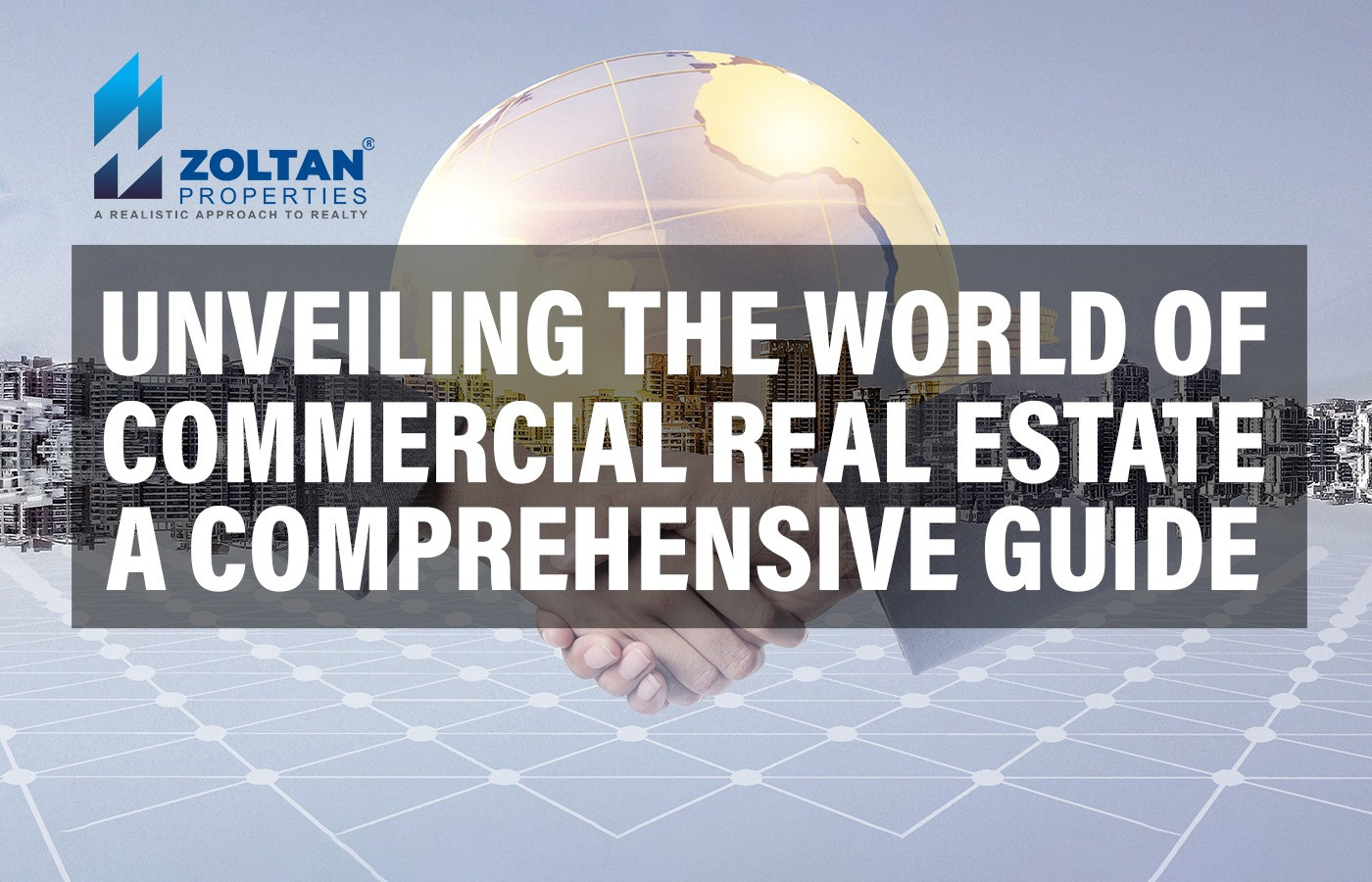Welcome to our blog where we unravel the diverse and dynamic realm of Commercial Real Estate (CRE). Whether you're an investor, business owner, or someone looking to gain insights into this lucrative sector, this guide will provide you with a comprehensive overview of what CRE entails and how it functions.
Understanding Commercial Real Estate:
Commercial real estate refers to properties specifically designated for business purposes, distinguishing it from residential real estate. These properties are typically leased to tenants for various income-generating activities, forming a critical component of the economic landscape.
Read Also: Dubai Commercial Real Estate: A Flourishing Landscape in Q3 2023
Diverse Forms of Commercial Real Estate:
CRE comes in many shapes and sizes, ranging from single storefronts to expansive shopping centers. The diversity of commercial properties includes office buildings, residential duplexes, restaurants, coffee shops, warehouses, and more. The sheer variety caters to the needs of businesses across industries.

Exploring Commercial Real Estate Categories:
Retail Spaces:
Dive into the world of retail, where storefronts become the face of businesses. From small boutiques to grand shopping centers, the retail category within CRE is a dynamic realm that evolves with consumer trends.
Office Spaces:
Uncover the significance of office spaces within CRE, ranging from sleek corporate buildings to co-working environments. The classification of office spaces into classes A, B, and C adds a layer of nuance, reflecting varying levels of quality and desirability.
Hospitality Sector:
Explore the hospitality domain within CRE, where hotels and resorts play a crucial role. Understanding the unique dynamics of this category unveils the potential for both short-term gains and long-term investments.
Commercial Dining:
Step into the world of restaurants, cafes, and eateries, where the ambiance and location are key factors. This category within CRE caters to the ever-growing demand for diverse dining experiences.
Healthcare Facilities:
Delve into the healthcare segment of commercial real estate, recognizing the specialized needs and considerations for properties dedicated to medical practices and facilities.

Managing Commercial Real Estate
Managing commercial real estate involves overseeing leased properties, and owners often seek the expertise of a commercial real estate management firm for comprehensive management. These firms assist in tenant acquisition, lease oversight, financing coordination, and property maintenance. Navigating the diverse regulations across states, counties, municipalities, industries, and property sizes requires specialized knowledge. Landlords face the challenge of optimizing rental income while minimizing vacancies and tenant turnover, which can be costly due to the need for space adaptations for new tenants. Striking this balance is crucial for successful commercial real estate ownership.
Investors in commercial real estate can profit through two main strategies:
1.Direct Investment:
- Ownership: Investors buy and own physical properties, requiring significant capital and industry expertise.
- Risk-Reward: High-risk, high-reward model with potential for substantial returns through property value appreciation.
- Location: Success depends on choosing properties in areas with high demand and low supply for favorable rental rates.
2. Indirect Investment:
- REITs and ETFs: Invest in Real Estate Investment Trusts (REITs) or Exchange-Traded Funds (ETFs) for exposure to a diversified portfolio without direct ownership.
- Supporting Industries: Invest in companies supporting commercial real estate, like banks or real estate agencies.
- Diversification: Offers diversification and liquidity, spreading risk across assets without direct property management responsibilities.
Investors select a strategy based on risk tolerance, expertise, and financial goals. Direct investment provides control, while indirect methods offer accessibility and diversification.

Commercial Leases
Many businesses opt to lease commercial properties rather than owning the buildings they occupy. Typically, investors or groups of investors own the commercial properties and receive rent from businesses. The rental rates for commercial leases are usually expressed as annual rental dollars per square foot, in contrast to residential real estate rates, which may be quoted as an annual sum or monthly rent.
Commercial leases typically have durations ranging from one to more than 10 years, with office and retail spaces often having average lease durations of five to 10 years. This stands in contrast to the shorter-term yearly or month-to-month leases commonly seen in residential real estate.
There are four main types of commercial property leases, each involving varying levels of responsibility for both the landlord and the tenant:
1. Single Net Lease: The tenant is responsible for paying property taxes.
2. Double Net (NN) Lease: The tenant is responsible for paying property taxes and insurance.
3. Triple Net (NNN) Lease: The tenant is responsible for paying property taxes, insurance, and maintenance.
4. Gross Lease: The tenant pays only rent, while the landlord covers the building's property taxes, insurance, and maintenance.
Advantages of Commercial Real Estate
Commercial real estate presents several advantages that make it an appealing investment option for individuals and businesses alike. One key advantage is the potential for attractive leasing rates, especially in areas where new construction is constrained by either limited available land or regulatory restrictions. This constraint can lead to impressive returns and substantial monthly cash flows for commercial property owners. Different types of commercial properties, such as industrial buildings, offer varying leasing rates, with industrial spaces typically renting at lower rates but also having lower overhead costs compared to high-rise office towers.
Another notable advantage of commercial real estate is the availability of comparably longer lease contracts with tenants when compared to residential real estate. The extended lease terms contribute to a more stable cash flow for property owners, providing a sense of financial security, especially when long-term tenants occupy the premises.
Conclusion
In conclusion, commercial real estate (CRE) presents a diverse range of opportunities for investors and entrepreneurs. Whether through direct ownership or indirect investment vehicles like REITs, CRE offers attractive leasing rates, stable income from long-term leases, and potential capital appreciation. Thorough research and informed decision-making are key to navigating this dynamic market. By understanding the various categories within CRE and staying abreast of market trends, individuals can unlock the potential for financial growth and portfolio resilience in the ever-evolving world of real estate and commerce.
Elevate your commercial real estate portfolio with Zoltan Properties – your key to smart investing. Benefit from prime locations, expert guidance, and tailored solutions for maximum returns. Our transparent transactions and future-ready spaces ensure a seamless journey to financial success. Invest with confidence – contact Zoltan Properties today and unlock the potential of your commercial real estate ventures.
Read our next blog: Real Estate Investment Solutions for Maximum ROI

 IN
IN
 France
France
 Germany
Germany
 Greece
Greece
 India
India
 Saudi Arabia
Saudi Arabia
 Spain
Spain
 United Arab Emirates
United Arab Emirates
 United Kingdom
United Kingdom
 United States
United States






